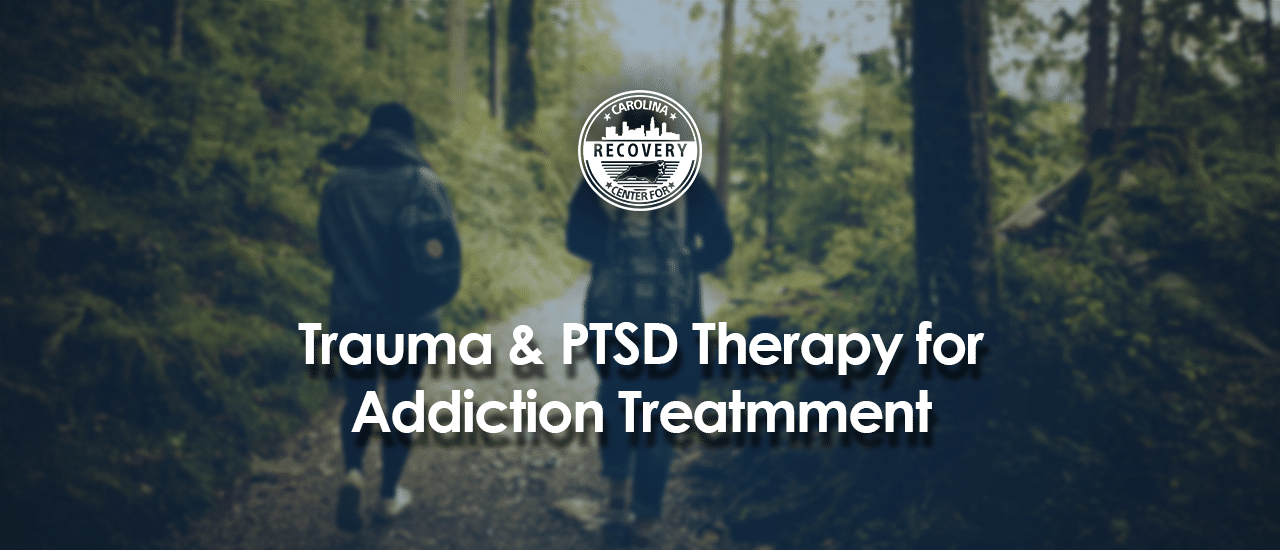


An overwhelming number of people who suffer from addiction have experienced trauma in the past or are currently suffering from post-traumatic stress disorder (PTSD). As a major underlying factor for drug and alcohol abuse, trauma is one of the number one reasons why people abuse and ultimately become addicted to drugs and alcohol. PTSD and other past trauma are caused by a number of events that make a person fear for his or her well-being. However, when left untreated, trauma can easily turn into PTSD and addiction. As a result, it is crucial to treat both trauma and addiction at the same time with trauma therapy or trauma-informed care.
Surveys have found that more than 70% of patients who seek treatment for substance abuse have a history of trauma exposure. Experiencing childhood trauma or repeated traumas as an adult are both major risk factors for a number of psychiatric conditions, including drug and alcohol addiction.[1] Similarly, people who develop PTSD are at a higher risk of developing a drug or alcohol addiction.
Despite the high comorbidity of PTSD, trauma, and substance use disorder, these conditions are effectively treated through dual diagnosis treatment that uses a trauma-informed approach to care.
Multiple studies have proven the direct correlation between trauma, rates of PTSD, and co-occurring substance use disorder. However, one doesn’t always come before the other. To explain, many people experience a traumatic event, develop PTSD, and use drugs or alcohol to cope with their symptoms of PTSD. While drugs and alcohol may seem effective at numbing or masking these unpleasant symptoms, prolonged substance abuse inevitably leads to addiction. On the other hand, some people develop a drug or alcohol addiction first. In these cases, individuals who abuse drugs or alcohol compulsively may engage in risky or illegal behaviors that put them at risk for trauma exposure. As a result, trauma may develop after addiction, and turn into PTSD or further exacerbate the symptoms of the substance use disorder.
PTSD and addiction are particularly common among veterans. For example, more than 20% of veterans who have PTSD also have a substance use disorder, and approximately 33% of all veterans who seek addiction treatment also have PTSD.[2] Similarly, trauma and substance abuse are known to significantly affect survivors of sexual assault or abuse. Other types of trauma that may perpetuate both PTSD and substance abuse include:
Regardless of whether trauma or addiction came first, it is imperative that people suffering from these co-occurring disorders receive trauma therapy.
The symptoms of PTSD vary from person to person as some people begin experiencing symptoms shortly after the traumatic event while others don’t develop symptoms for several months or years. People who battle with PTSD may associate present situations with their past traumas, causing their mind and body to react in various ways. When the brain is triggered, PTSD can make it difficult for individuals to differentiate between their past trauma and what is actually happening at the moment.
Symptoms of PTSD include:[3]
These symptoms may ebb and flow depending on a person’s day, mood, and external triggers. For example, someone may experience worsening symptoms when stressed out or exposed to something that reminds them of the event. In whichever capacity people experience these symptoms, they are terribly distressing and make daily life substantially more difficult. Unfortunately, rather than seeking help, some people abuse drugs or alcohol and ultimately develop an addiction. For this reason, if you or someone you love is experiencing symptoms of PTSD, reach out for help or confide in a trusted loved one as soon as possible.
Trauma-informed care, or trauma therapy, can help people who are struggling with PTSD and addiction learn to manage their symptoms without the use of drugs or alcohol. By design, trauma-informed care helps treatment providers understand the implications of trauma on substance abuse and follow a set of guidelines that makes for the highest level of care. Rather than focusing on one specific therapy approach, trauma-informed care refers to a collection of therapeutic interventions that help change the way trauma is processed in the brain in order to reduce a person’s symptoms.
In order to provide an effective treatment regimen, trauma therapy follows SAMHSA’s six guiding principles to trauma-informed approaches, which are as follows:[4]
By adopting a trauma-informed approach to dual diagnosis care, patients receiving trauma therapy receive ongoing attention, compassionate support, and ongoing care that best supports their needs.
Trauma therapy may occur on both a group and an individual basis. The most effective type of treatment for trauma, PTSD, and addiction is one that addresses the physical and psychological manifestations of both conditions at the same time. Although the majority of trauma-informed care consists of behavioral and holistic therapies, medication may help treat some symptoms such as depression or panic attacks. As a result, no two people who receive trauma therapy will undergo the same processes, so it’s important to get a treatment plan that is tailored to your specific needs.
There are many different types of therapies used to treat PTSD and trauma. Some of the most popular include behavior therapy, EMDR therapy, group therapy, and psychodynamic therapy.[5] Behavioral therapies are, by far, the most common form of trauma therapy. These include:
These behavioral therapies may occur on a group or an individual basis. However, groups are recommended for many people suffering from trauma and addiction as group therapy provides one method of peer support.
Another popular form of trauma and PTSD therapy is Eye Movement Desensitization and Reprocessing (EMDR) which involves bilateral stimulation of the eyes that is known to change a person’s response to trauma. During EMDR, patients focus on visually tracking a light or their therapist’s finger while recalling traumatic events, which is said to eliminate or reduce symptoms of trauma and PTSD.
When someone is battling PTSD and addiction, it can feel as though there is no way out. However, with the help of a compassionate support group and the right treatment, anyone can get sober and heal from trauma.
If you or a loved one is struggling, we’re here to help you. Our dual diagnosis treatment facility in North Carolina offers individualized and long-term treatment programs to those suffering from co-occurring disorders. By taking a holistic approach to treatment, each client in our program will have access to an individualized treatment plan, a primary therapist, and exposure to a variety of alternative and recreational therapies.
You don’t have to suffer alone. Take the first step by contacting us today.
References: